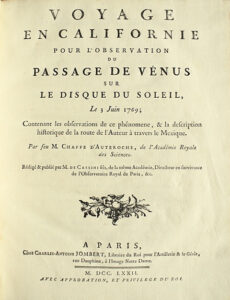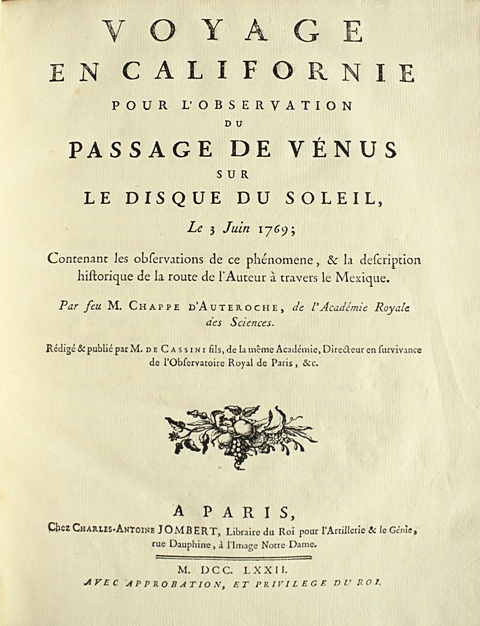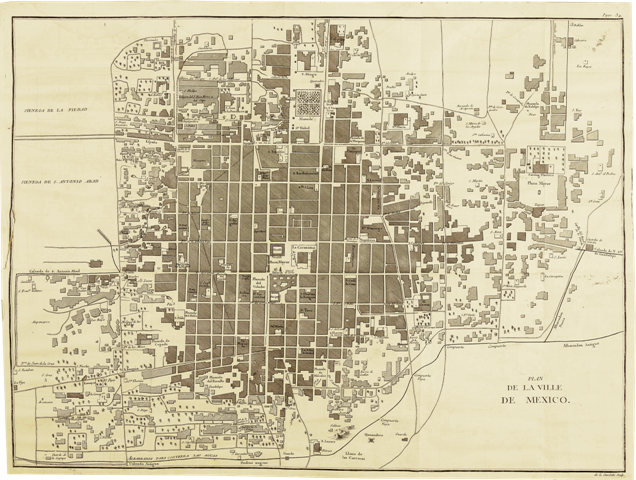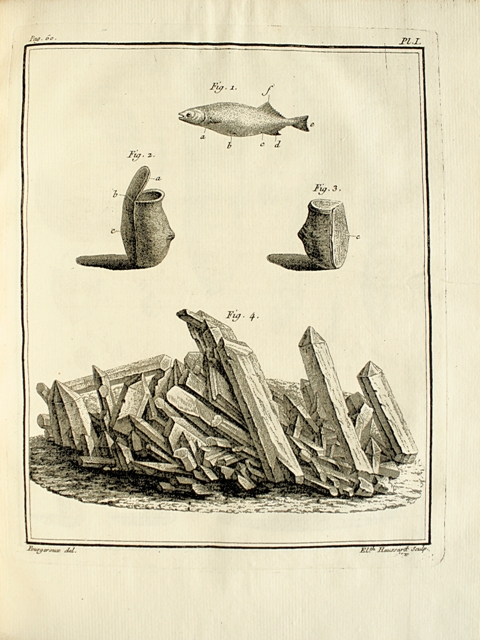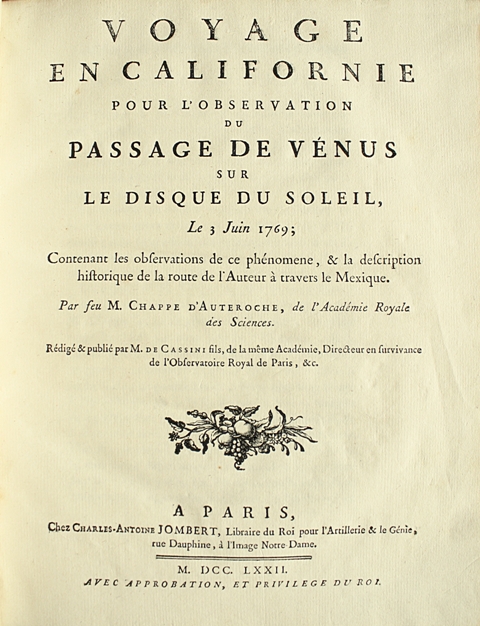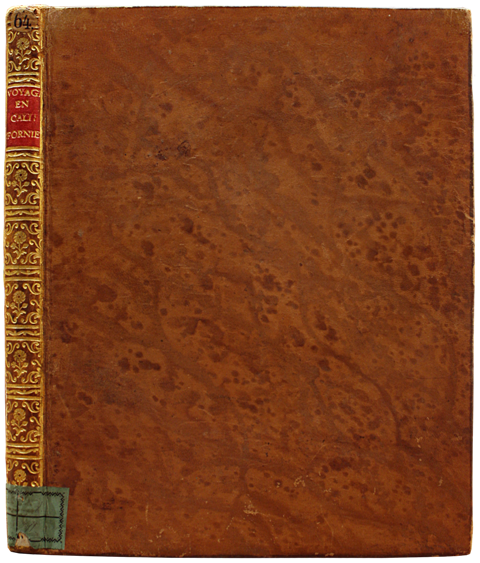Paris, Charles-Antoine Jombert, 1772.
4to [254 x 196 mm] of (2) ll., 170 pp., (1) l., large folding plan of Mexico City and a folding diagram, 3 plates out of pagination. Full light-brown marbled calf, spine ribbed and richly decorated, red morocco lettering piece, library’s label on the foot, sprinkled edges. Contemporary binding.
Sought-after first edition of this scientific expedition to California, illustrated with 3 plates and complete with the large folding plan of Mexico city. Sabin 12003; Cowan II, p. 114; Hill 278; Howes C299; Palau 67059; Streeter Sale 2443.
“Chappe d’Auteroche was born in Mauriac in Auvergne on March 2, 1722, from a noble family. He took holy orders, and devoted himself to the study of astronomy. In 1760, he was chosen by the academy of sciences, of which he was a member, to go to Tobolsk to observe the famous transit of Venus across the sun, dated on June 6 of the year 1761. He went by land to Saint Petersburg, and left for Siberia, where he arrived only after having experienced all the inevitable harms of a travel in such a climate, during the most rigorous season. Having arrived in the last days of April 1761, he observed on the 5 a solar eclipse that gave him the difference of meridian from Tobolsk to Paris. Chappe had built a small observatory and made all the necessary preparations… The abbot Chappe was able to see Venus entering under the sun, and made the observations that were the goal and price of this long and painful trip. They were consigned in a ‘Mémoire du passage de Vénus sur le soleil, avec des observations sur l’astronomie et la déclinaison de la boussole faites à Tobolsk, en Sibérie, en 1761’, Saint Petersburg, 1762, 4to. He came back to France two years after, and published: ‘Voyage en Sibérie fait en 1761’, Paris, 1768. This relation, full of facts and curious details, but in which the author had made some unfavorable observations about Russia, was welcomed in France, and had the honor of being refuted or criticized by the empress Catherine II herself in a pamphlet entitled: ‘Antidote ou Réfutation du mauvais livre superbement imprimé intitulé : ‘Voyage en Sibérie…’’. The same phenomenon that had him face the snows and ices of the North involved him, six years after, in another travel where he had to endure the heat of a burning climate. California, uncultivated and not much occupied peninsula, having been judged one of the places on earth most proper for the observation of the transit of Venus in 1769, the academy of sciences obtained from the king the permission to send one of its members. Chappe was chosen for this mission, and he went to California, with Messrs Dol and Medina, marine officers and astronomers for the king of Spain. Shortly after his arrival in California, he suffered from a contagious disease, and died on August 1st, 1769, satisfied, as he was dying, to have fulfilled the mission for which he had left his country. His zeal for science was so important that, it cost him his life. When they were hoping for his recovery, the efforts he made to observe a lunar eclipse increased his illness and sent him to his grave. His observations were published in Paris in 1772, by C.-F. Cassini, under the title ‘Voyage en Californie, pour l’observation du passage de Vénus…’, Paris, 1772, 4to.”
“A thrilling account of a race against time to reach Lower California before the transit of Venus occurred. After nerve-racking delays, which began in Spain, and narrow escapes from disaster, the goal was reached late in May. Two days after the transit was observed a malignant fever spread through the little group and Chappe d’Auteroche [1728-1769], who nursed the sick and dying, took it himself and died on the first of August. Mr. Cowan is quite incorrect in his note on this book, saying ‘this celestial phenomenon was visible only upon the coast of California.’ It was in fact visible throughout the western hemisphere and expeditions to observe it were sent to numerous stations. Also Spain not only knew of the expedition, but in the end co-operated in every way to make it a success.” (Streeter Sale 2443). Cowan I, p. 46.
The work is illustrated with a large folding plan of Mexico city, 2 plates of natural history and a diagram showing the transit of Venus.
A beautiful copy of this important scientific travel account, preserved in its elegant contemporary binding with a finely decorated flat spine.
Provenance: from the library of the Comtes de Peren (with ex-libris).
